CONCEPT
Sharing the Beauty of Japan with the World
– Las Geisha –
Welcome to 「Las Geisha」, where we take traditional Japanese kimonos and infuse them with a fresh perspective. Cherishing Japan’s rich culture and heritage, we aim to deliver the elegance of kimonos to people around the globe.On our website, you’ll find a collection of kimonos featuring unique designs and materials. We offer products that allow you to experience the traditional elegance of Japan while embracing a casual and enjoyable style. Discover your favorite piece from our diverse range and immerse yourself in the beauty of Japan in a new way.
At Las Geisha, we’re passionate about sharing Japan’s traditions and beauty with people worldwide. We invite you to visit our website and join us in celebrating the exquisite culture of Japanese kimonos together.”
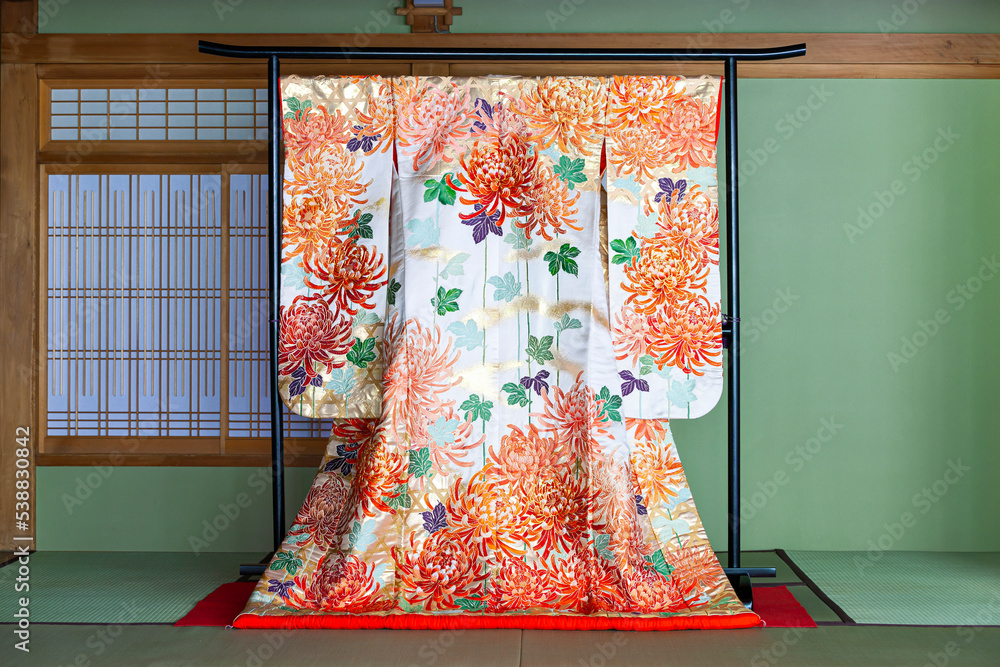
LAS GEISHA
HISTORY
- 2023
-
Established in Tokyo, Takadanobaba.
We commenced the development of our original products.
- 2024
- We expanded our business overseas.
CULTURE
The traditional Japanese ethnic costume, also known as “kimono” or “wafuku,” originally derives its name from the Japanese words “kiru” (to wear) and “mono” (thing or clothing), meaning “a thing to wear” or simply “clothing.”
The term “wafuku” originated to distinguish it from clothing styles from foreign countries, where “wa” refers to Japan and “fuku” means clothing.
And currently, the kimono is recognized internationally as Japanese traditional clothing under the specific name “kimono.”
The kimono embodies the unique Japanese culture of following Japan’s four seasons and adopting a seasonal lifestyle.
It has been confirmed that people started wearing clothes in the Jomon period, and the origins of the current kimono are said to be in the Heian period.

- Jomon Period
- It is believed that during the Jomon period, when people lived by hunting, they wore it to protect themselves from foreign enemies and to keep out the heat and cold. Therefore, there were no decorations, and they were simply made of animal fur, feathers, tree bark, etc. that were obtained through hunting and wrapped around the body. Eventually, rice paddies and fields were built and crops were grown, which led to the creation of fibers such as ramie and hemp, which were then used to spin yarn and make textiles.
- Yayoi Period
- In the Yayoi period, known for the Yamataikoku governed by Queen Himiko, women wore a sleeveless garment called “Kantoi,” a one-piece type of clothing with a hole in the middle of a large piece of fabric. They secured it around the waist with a belt-like string passing through the head. Men wore a garment called “Kanpui,” a single piece of cloth wrapped around. Higher-ranking individuals could wear silk clothing. During this period, primitive hand weaving using a device called Izaribata and dyeing with plant-based dyes like purple grass and indigo were practiced, incorporating these techniques into their clothing.
- Kofun Period
- As interactions with the continent increased, Japan began to be influenced by China and other regions. Women wore an upper garment known as “kinu” with imitated Chinese-style wide sleeves called “tsutsusode” and a skirt-like garment called “kinumo.” Men wore a divided garment with a top similar to “kinu” and a tube-shaped cloth tied at the ankles with a string, known as “kinubakama.” Archaeological figures suggest that in this era, the front closure of clothing was on the “left side.” It’s worth noting that the modern kimono has a “right-side” front closure. Sericulture flourished during this period, leading to an increase in silk textile production.
- Asuka・Nara Period
-
Around the 8th century, the influence of China became more prominent due to missions such as the “Ken-Sui” mission and “Ken-Tō” mission, leading to the incorporation of many aspects of Chinese culture. The ruling class was notably influenced by the clothing of the Han ethnic group, who dominated China, and wore clothing referred to as “kanpuku.” This style featured a garment with large cuffs and an overall loose fit. “Kanpuku” included a high-necked collar style called “bankara,” with men wearing a crown on their heads. Men also wore a front-opening gown called “hō” over the garment, with hakama underneath, while women wore a long skirt-like garment called “mo.” Additionally, both men and women wore pleated garments called “hira-mi” over hakama or mo.
Around the Asuka period, approximately in the 7th century, the influence of China became more pronounced through diplomatic missions like the “Ken-Sui” and “Ken-Tō” missions. The ruling class was deeply influenced by the clothing of the Han ethnic group, who governed China, and adopted the style known as “kanpuku,” characterized by a spacious and loose-fitting garment with wide cuffs. “Kanpuku” featured a garment with a high-necked collar known as “bankara” worn on the left side, and both men and women wore a style that included a crown for men and a front-opening gown called “hō” worn over a garment with hakama for men and long skirts called “mo” for women. Additionally, “hira-mi,” pleated garments, were worn over hakama or mo. During the Asuka period, the “Cap Rank System” was established by Prince Shōtoku, differentiating the colors of crowns and clothing based on rank. In the Nara period, a system called “Sankō-fuku” was implemented, dividing clothing into three categories: “Raifuku” (ceremonial attire), “Chōfuku” (morning attire), and “Seifuku” (ceremonial attire). In the 3rd year of the Yōrō era (719 AD), Emperor Genmei’s “Clothing Code” established the tradition of right-front closures for kimono.
- Heian Period
-
With the discontinuation of diplomatic missions to Tang China in 894, exchanges with the continent ceased, leading to the gradual development of Japan’s unique kimono culture. In the Heian period, courtiers’ attire evolved, and men transitioned from morning attire to wearing “sokutai,” while women adorned themselves in formal attire known as “karaginu-mo” or “nyōbō-shōzoku.” These layered garments earned the colloquial name “jūni-hitoe” due to the many layers. Both sokutai and karaginu-mo featured the use of “ōsode,” large sleeves that were not sewn beneath the cuff, and underneath, a type of garment with tube sleeves called “kosode,” which laid the foundation for the modern kimono.
Among the elite such as nobles and warriors, those of higher status wore “shirokosode” as undergarments, while commoners adopted it as outerwear with sleeves featuring a rounded shape.
- Kamakura・Muromachi Period
- As samurai families grew in power and gradually came to hold the real power in politics, clothing also changed to be more practical in preparation for battles. At this time, the samurai’s clothing consisted mainly of long-sleeved hitatare and hakama for men, and kinubakama for women, which consisted of kosode, hakama, and robe. did. Samurai families used to wear large sleeves in public, but they began to wear small sleeves in their private lives. Toward the end of the Muromachi period, layers of clothing became simpler, and the hakama and moi were omitted, changing to only a kosode. Both samurai and commoners began to wear kosode with a hem, regardless of their social status or gender, and gradually decorations began to be added to them.
- Azuchi・Momoyama Period
- After the pacification of the conflicts, a vibrant artistic and craft culture emerged, giving rise to the Momoyama period. The decoration of kosode became intricate, and advancements in dyeing and weaving techniques, such as foil and shibori, led to the incorporation of vibrant and ornate patterns and designs into kimonos. Men adopted the “kataginubakama” born during the Kamakura and Muromachi periods, while women wore “uchikake” or “koshibiki” styles. Among commoners, the Nago-ya obi, originating from Korea and transmitted to Nagoya in present-day Saga Prefecture, became popular.
- Edo Period
- The Edo shogunate, founded by Tokugawa Ieyasu, lasted for 265 years, establishing a harsh feudal society with isolation from the country, while the commoner class grew in power and a colorful merchant culture flourished. Men are considered to be in the “outside” (public world) and women in the “inner world” (private world).Men in the “outside” are determined to dress according to their social status, and feudal lords are responsible for their territory. They wore kamishimo, also known as the domain’s uniform, according to the feudal government that gave them autonomy. Women, on the other hand, were allowed to dress relatively freely, so they wore kosode with decorations of their own choice. During the Genroku period (1688-1703), gorgeous kosode with gold thread woven into bright colors called Genroku patterns were created. As the length of the sleeves gradually became longer and the width of the obi obi widened, a kosode was created that was almost the same as today’s kimono, with an opening for ease of movement and breathability. At first, the length of the kimono was 2 lengths (same length as the body length), but as it gradually became longer, people began to wear it with an ohashori, and in the later stages, they began to tie the “otaiko knot” using an obijime and an obiage. became.
- Meiji Period
- During the Meiji Restoration, a period marked by significant changes, the opening of the country led to an influx of foreign cultures, resulting in a Westernization of lifestyle and clothing. Western attire was incorporated into the ceremonial clothing of the imperial court, and among the upper class, Western clothing became fashionable. In the 11th year of the Meiji era (1878), a law was enacted designating Western clothing as formal attire, making it the standard for bureaucrats, military personnel, and others. However, common people still wore traditional kimono, particularly men who adorned “Black-Ha Uchikake with Five Mon Emblems” and women who wore “Shrinking Silk with Five Mon Emblems and Patterned Hem Juban” paired with a round obi.
- Taisho Period
- Western culture permeated the general population, and motifs from overseas began to be incorporated into the patterns of kimonos. Moreover, vibrant-colored haori (jackets) and michiyuki coats became popular. On the other hand, influenced by the United States, business suits became fashionable for men, and as women’s participation in society expanded, there was a growing trend towards Western-style clothing for women as well.
- Shouwa・Hesei~Reiwa
- During the Second World War, men typically wore military-style uniforms in subdued colors, while women wore kimonos with monpe (work pants) underneath. After the war until around the 1960s, kimonos were worn as everyday attire, but gradually Western clothing became the primary attire for the Japanese people. Kimonos then became associated with formal occasions like weddings and funerals, adopting the sense of being “ceremonial attire.” However, the tradition of wearing kimonos for events like coming-of-age ceremonies and Shichi-Go-San (celebration for children at ages three, five, and seven) has persisted.
FORMALITY LEBEL OF KIMONO
- 黒留袖(くろとめそで)

-
黒留袖(くろとめそで)は、日本の伝統的な女性の着物で、主に結婚式や格式ある行事で着用される格式高い着物です。
「留袖」は袖の裾が広がる袖丈の長い着物を指し、その中でも「黒留袖」は深い黒色の生地に豪華で美しい柄や模様が施されています。
既婚女性が着る最高格の着物のことで、和装の第一礼装とされています。
- 色留袖(いろとめそで)

-
色留袖(いろとめそで)は、既婚・未婚問わず着用できる格式ある着物です。
通常、深い色合いの生地に抽象的な花や文様が金や銀で繊細に刺繍されています。
格式の高い場での着用を意味し、特に結婚式や成人式などで新婦や華やかな場での女性の装いとして選ばれます。
- 訪問着(ほうもんぎ)

-
訪問着(ほうもんぎ)は、振袖や留袖の次に格が高い着物です。特徴的な柄や模様が背中と袖に広がり、上半身にも美しい模様が取り入れられています。
比較的地味な色合いで絹地に手描きや染め、刺繍などで施された模様が特徴的です。着物を正装として選ぶ際、優雅さと格式を求める方に好まれる一着です。
- 振袖(ふりそで)

-
振袖(ふりそで)は、成人式や結婚式などの特別な場で若い女性が身に着ける日本の伝統的な着物の一種です。
普段の着物よりも袖が長く広がり、華やかで派手な柄や色使いが特徴的です。
通常、成人を迎える若い女性が初めて振袖を着ることが多く、この時の振袖姿は日本の伝統的な儀式や行事において重要な要素となっています。
- 色無地(いろむじ)
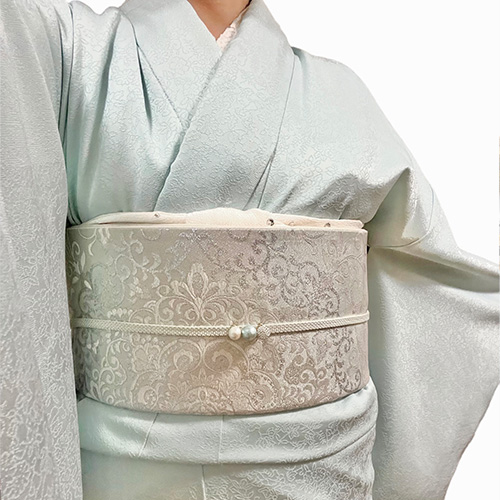
- 色無地(いろむじ)は、白い生地に黒色以外の一色で染めた着物で、柄や模様がなく単色のシンプルなデザインを指します。格は、生地に織り込まれた柄の「地紋(じもん)」の有無によって異なります。色無地は訪問着や留袖よりもカジュアルな場面で着られることが一般的です。
- 付け下げ(つけさげ)
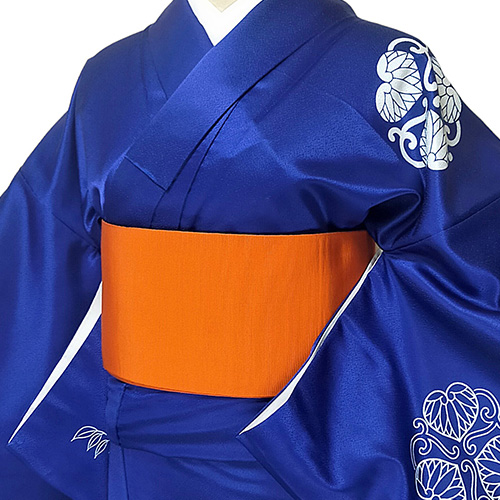
- 付け下げ(つけさげ)は、左肩にワンポイントの柄が入った着物のことで訪問着の次に格が高い着物です。訪問着と異なり、背中や袖には模様がなく一つの色で統一されたものが多いです。袋帯を締めれば格を上げることができ、名古屋帯や洒落袋帯を締めれば格を落とすことができます。 振袖や留袖ほど格式が高くないため結婚式以外の正装としても広く使われます。
- 小紋(こもん)
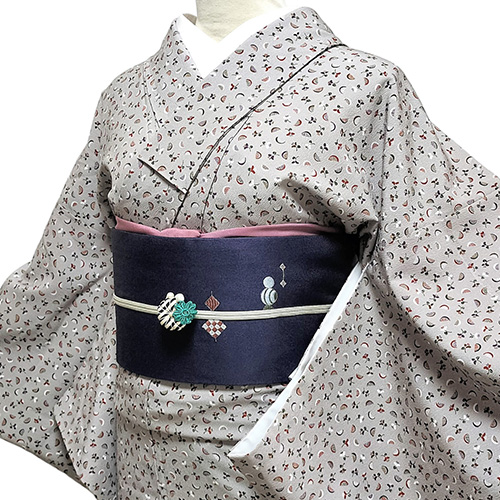
-
小紋(こもん)は、生地全体に柄が入った着物で、付け下げや色無地よりも格が低く、日常の普段着として着用されるものです。
訪問着や留袖ほど華やかではなく比較的地味でシンプルな柄や模様が特徴です。小紋は単に模様が小さな着物を指し、様々なデザインがあります。普段使いや季節ごとの行事、観劇などに着用されます。
SDGS
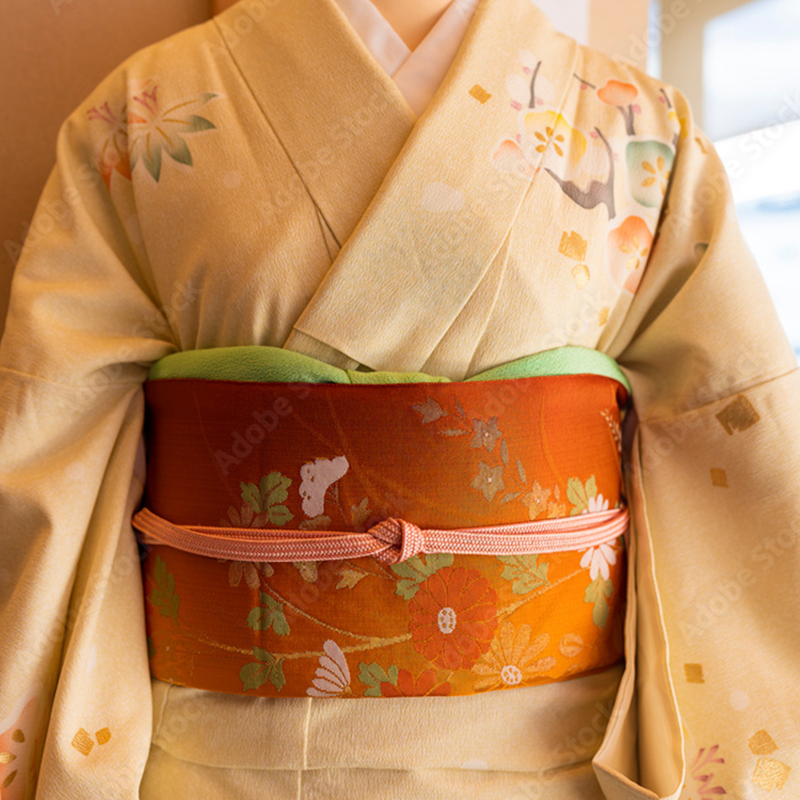
- “Kimono leads the way in sustainability!”
- Arranging old kimonos contributes to environmental sustainability as an eco-friendly and sustainable initiative aligned with the Sustainable Development Goals (SDGs).
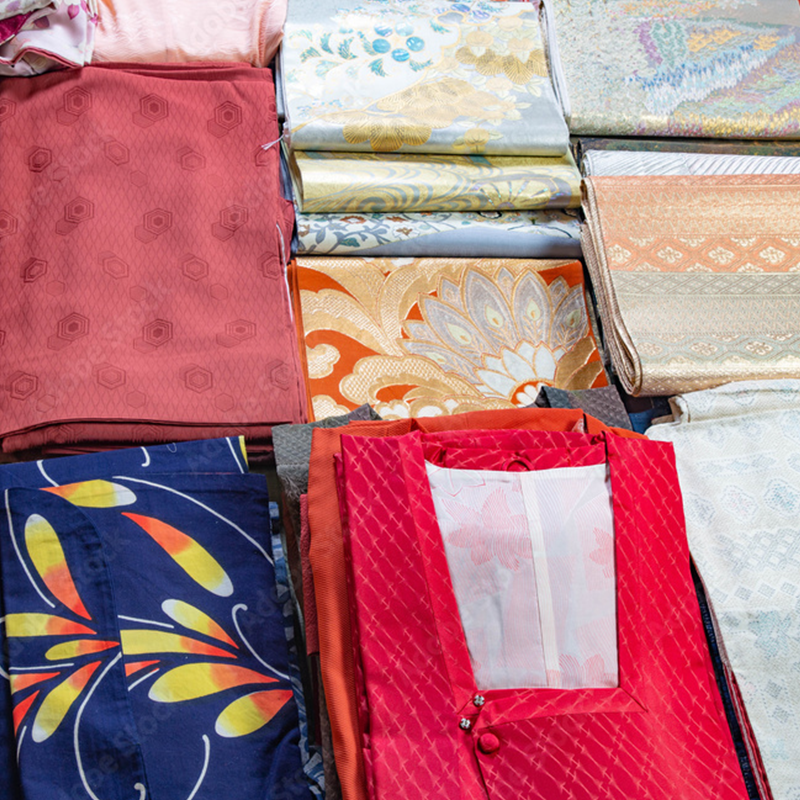
- SDGs「12」-The relationship between our goals and kimono.-
- By reusing old kimonos, we contribute to the efficient use of resources and the reduction of waste. Moreover, we create new value while respecting traditional Japanese culture.
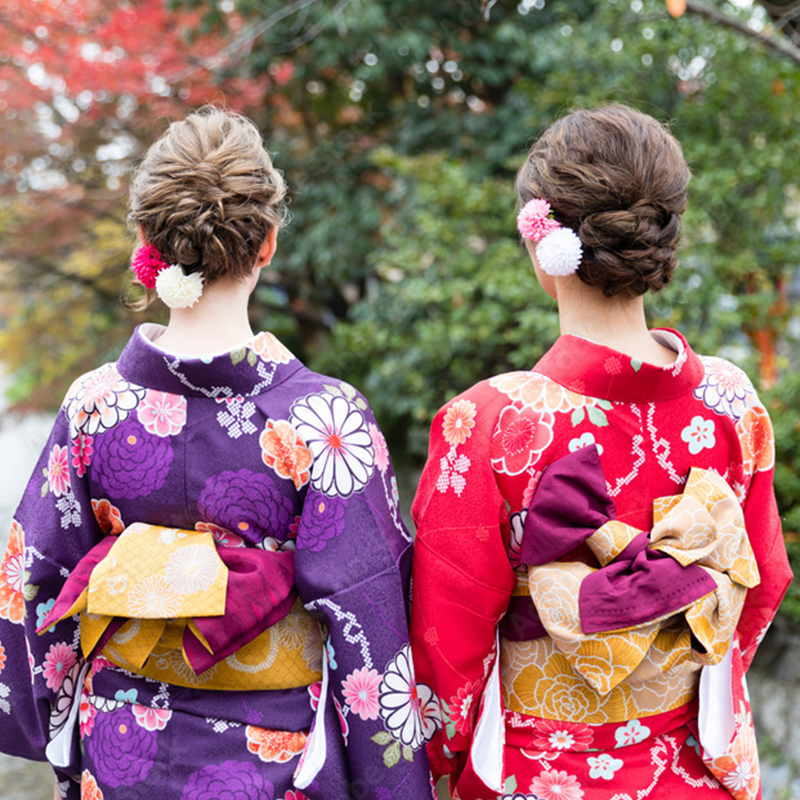
- The Growing Impact of Kimono on SDGs.
- Focusing on the enduring sustainability, beautiful patterns, and traditional weaving values, companies are increasingly engaging in the reuse and upcycling of kimono.
INFORMATION
- LAS GEISHA 公式サイトOPEN!LAS GEISHA 公式サイトがOPENしました! 「調える香り」をコンセプトとした新ブランド「hana to mi」のデビュー(2021年4月1日発表予 …
ACCESS
LAS GEISHA
東京都新宿区高田馬場3-23-2
JR高田馬場駅 徒歩8分
営業時間:13:00 – 21:00
定休日:木曜日
東京都新宿区高田馬場3-23-2
JR高田馬場駅 徒歩8分
営業時間:13:00 – 21:00
定休日:木曜日
COMPANY
- 社名
- 株式会社Supremacy
- 住所
- 東京都新宿区高田馬場3-23-2
内藤ビル501号室 - 代表者
- 柳橋 博
- 設立日
- 2010年12月10日
- 資本金
- 1200万円
